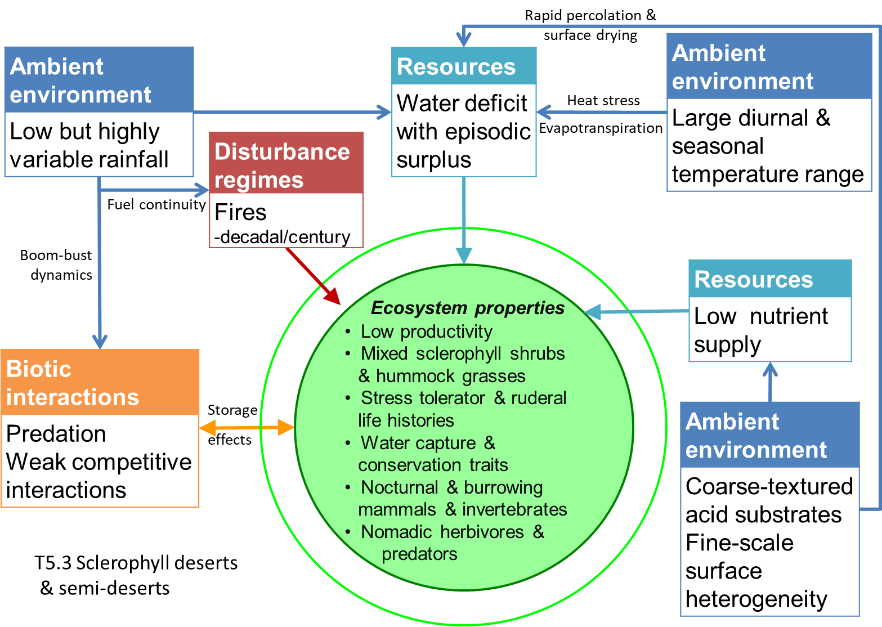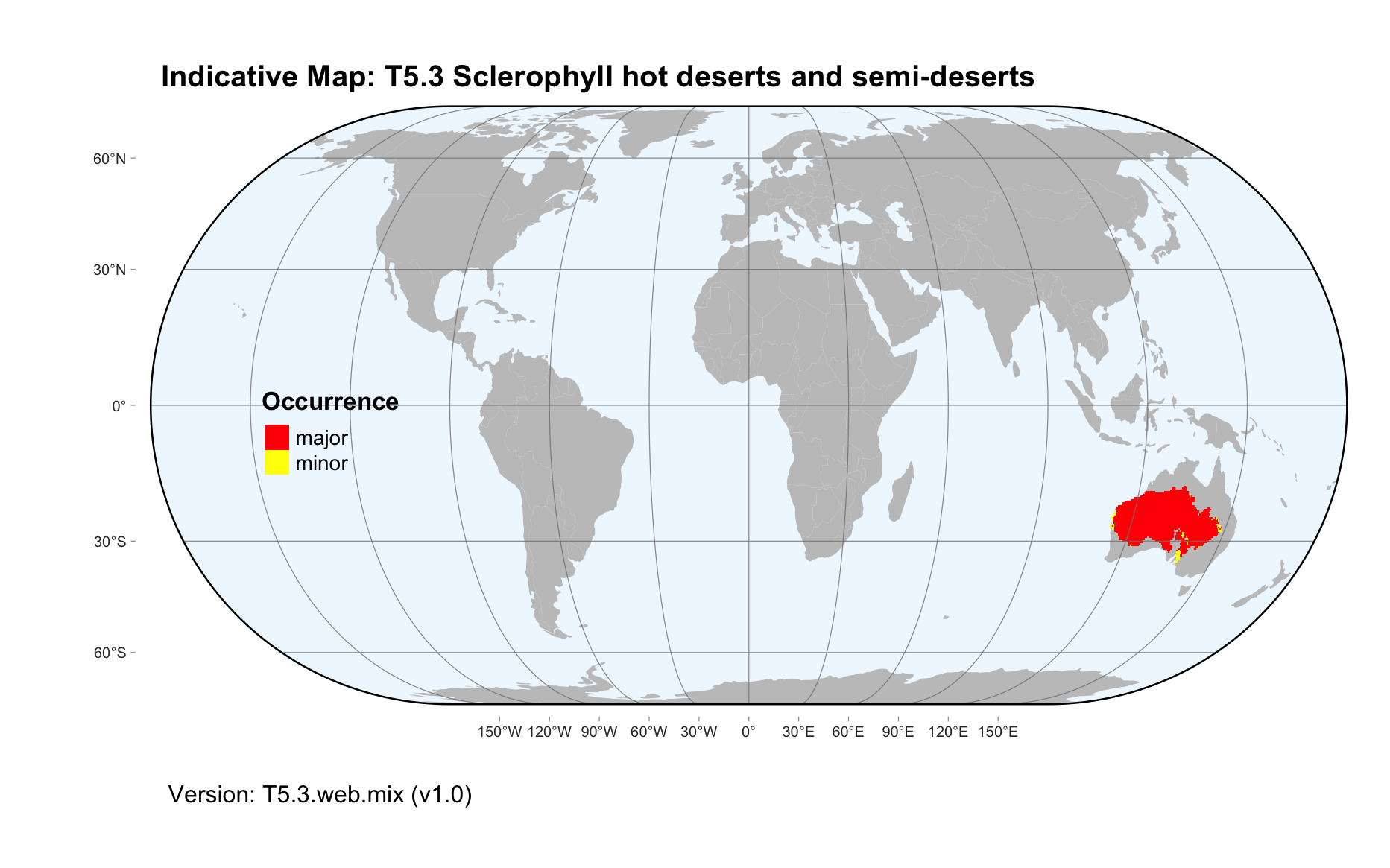Global ecosystem typology
Alternative site for the Global ecosystem typology with additional information for ecosystem profiles and indicative maps.
This site is maintained by jrfep
T5.3 Sclerophyll hot deserts and semi-deserts
Biome: T5. Deserts and semi-deserts biome
Contributors:
(texts)
Sclerophyll hot deserts and semi-deserts occur across central and western Australia on sandy soils. Dry and very low nutrient conditions favour dominance of long-lived hard-leaved shrubs and hummock grasses. This vegetation concentrates scarce resources in patches that provide critical refuges for invertebrates, reptiles, ground-nesting birds and small mammals, whose digging activity contributes to nutrient cycling. Fires periodically liberate resources and restructure these ecosystems. Episodic rain storms regulated by regional climate cycles produce a ‘boom’ in productivity, with emergence of short-lived plants and high, but transient abundance of small mammals.
Key Features
Perennial sclerophyll shrubs and Hummock C4 grasses on nutrient-poor soils; highly variable rainfall, high diversity and endemism.
Overview of distribution
Central Australia on sandy substrates; extremely arid with hot summers and and cool winters..
Profile versions
- v1.0 (2020-01-20): MG Tozer; DA Keith
- v2.0 (2020-05-31): MG Tozer; DA Keith
- v2.01 ():
- v2.1 (2022-04-06): MG Tozer; DA Keith Full profile available at official site
Main references
Selected references for this functional group:
Keith DA (2004) Ocean shores to desert dunes: the native vegetation of NSW and the ACT NSW Department of Environment and Conservation, Sydney
Morton S, Stafford Smith DM, Dickman CR, Dunkerley DL, Friedel MH, McAllister RRJ, Reid RW, Roshier DA, Smith MA, Walsh FJ, Wardle GM, Watson IW, Westoby M (2011) A fresh framework for the ecology of arid Australia Journal of Arid Environments 75: 313-329 DOI:10.1016/j.jaridenv.2010.11.001
Diagrammatic assembly model

Maps
Maps are indicative of global distribution patterns are not intended to represent fine-scale patterns. The maps show areas of the world containing major (coloured red) or minor occurrences (coloured yellow) of each ecosystem functional group. See general notes on maps.
There are 2 alternative versions of the indicative map for this functional group, please compare description and sources below.
T5.3.WM.nwx_v1.0

Datasets
- GIRT
Map references
Keith, D. A. & Tozer, M. G. (2017) Girt: a continental synthesis of Australian vegetation Australian vegetation. D. A. Keith. Editor, pp3-39. Cambridge University Press, Cambridge
T5.3.web.mix_v1.0

Datasets
- Resolve-Ecoregions-2017
- EarthEnv-LandCover-v1.0
Map references
Dinerstein E, Olson D, Joshi A, Vynne C, Burgess ND, Wikramanayake E, Hahn N, Palminteri S, Hedao P, Noss R, Hansen M, Locke H, Ellis EE, Jones B, Barber CV, Hayes R, Kormos C, Martin V, Crist E, Sechrest W, Price L, Baillie JEM, Weeden D, Suckling K, Davis C, Sizer N, Moore R, Thau D, Birch T, Potapov P, Turubanova S, Tyukavina A, de Souza N, Pintea L, Brito JC, Llewellyn Barnekow Lillesø JP, van Breugel P, Graudal L, Voge M, Al-Shammari KF, Saleem M (2017) An Ecoregion-Based Approach to Protecting Half the Terrestrial Realm, BioScience 67: 534–545. DOI:10.1093/biosci/bix014. Data-set available on-line
Tuanmu, M.-N. and W. Jetz (2014) A global 1-km consensus land-cover product for biodiversity and ecosystem modeling Global Ecology and Biogeography 23(9):1031–1045 DOI:10.1111/geb.12182
Check: the Glossary / Profile structure / the public document